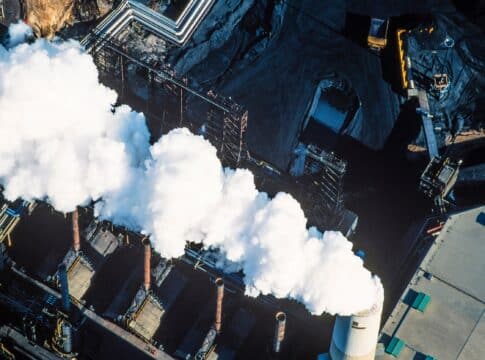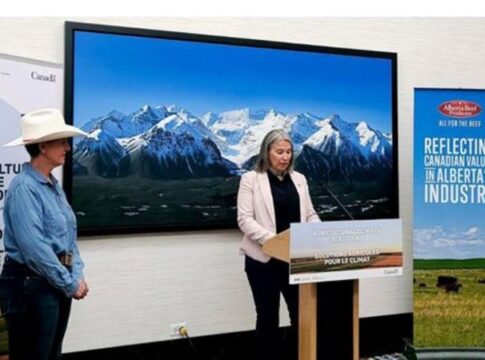Canada Explores Options to Cap Oil and Gas Emissions
The Canadian government proposed two options to set emissions cap in the oil and gas sector to achieve Prime Minister Justin Trudeau’s goal of reducing it by 40% by 2030.
The two emissions reduction options are in a discussion paper published by Environment Minister Steven Guilbeault.
The federal government aims to cut emissions across all sectors by 40% – 45% below 2005 levels by 2030. It also plans to hit net zero emissions by 2050.
The oil and gas industry accounts for over 1/4 of Canada’s total emissions (27%) or 179 million tonnes in 2020. The emissions cap in this sector was first promised during the last year’s election. But clear details about the plan are not available so far.
Sources say that the cap for the end of this decade will be close to the nation’s Emissions Reduction Plan announced last March. If so, it means it will be about 110 million tonnes, which is a 32% reduction over 2005 levels and 46% from 2019.
In the past 30 years, emissions from the sector increased by 83% as gas, oil, and oilsands production also rose.
Proposed Options for Oil and Gas Sector Emissions Cap
1. Cap-and-trade: sets regulated limits on emissions from the sector
The first option is imposing a new regulated, cap-and-trade system for the entire oil and gas sector. As such, there will be certain allowances (carbon credits) given to specific firms via an auction.
Lower-emitting companies can trade credits with higher-emitting ones. Those that don’t buy enough credits to cover their emissions need to buy them from other firms that have more credits than their cap.
The money from the auction would be for funding programs that aid the sector to cut emissions. The total allowances will decline over time in line with the emissions cap for the oil and gas sector.
2. Modifying the carbon pricing requirements
The second option is to alter or impose a steeper carbon price on the sector to cut down emissions. This will demand provincial governments to have their own carbon pricing systems to put in place the changes.
The current carbon price in Canada is at $50/tonne and is set to go up to $170/tonne by 2030.
Right now, oil and gas producers can avoid paying a bigger carbon price by buying carbon credits from other sectors. But with the new emissions cap, they can buy credits only from companies within the sector, not outside of it.
The government noted in a background document to the published paper:
“Both options could include some time-limited flexibilities to reflect the timelines of major emission reduction projects.”
While the sector’s emissions intensity (oil sands emissions per barrel of oil) declined by 30% since 1990, it remains higher than its global rivals.
And though most of Canada’s oil and gas companies are already reducing emissions through various means, the sector has a lot to do.
The Oil Sands Pathway Alliance
The Pathway Alliance is the country’s biggest oil sands producers group working together to tackle climate change. It has six member companies, including Suncor, the largest oil sands producer. Together, their operations account for 95% of Canada’s total oil sands production.
The collaboration seeks to bring the sector’s emissions to net zero by 2050. This includes cutting 22 million tonnes of carbon from 2019 levels by 2030. And one major part of their emission reduction strategies is the carbon capture and storage (CCS) projects.
The Alliance’s leading oil and gas producers are not against the emissions cap but said it must be feasible and realistic.
It’s important to note that the new cap-and-trade system must settle key issues involved to prevent confusion. And this must include agreeing on the current emission levels to serve as the baseline for reductions.
The Alliance says it’s only about 68 million tonnes in 2019 but the government reports it to be around 83 million tonnes.
The difference is significant and it can impact what reduction measures the sector has to pursue.
The oil and gas sector and its stakeholders can comment on the emissions cap proposals until September 21. The government will reveal the final design early next year.
The post Canada Explores Options to Cap Oil and Gas Emissions appeared first on Carbon Credits.



